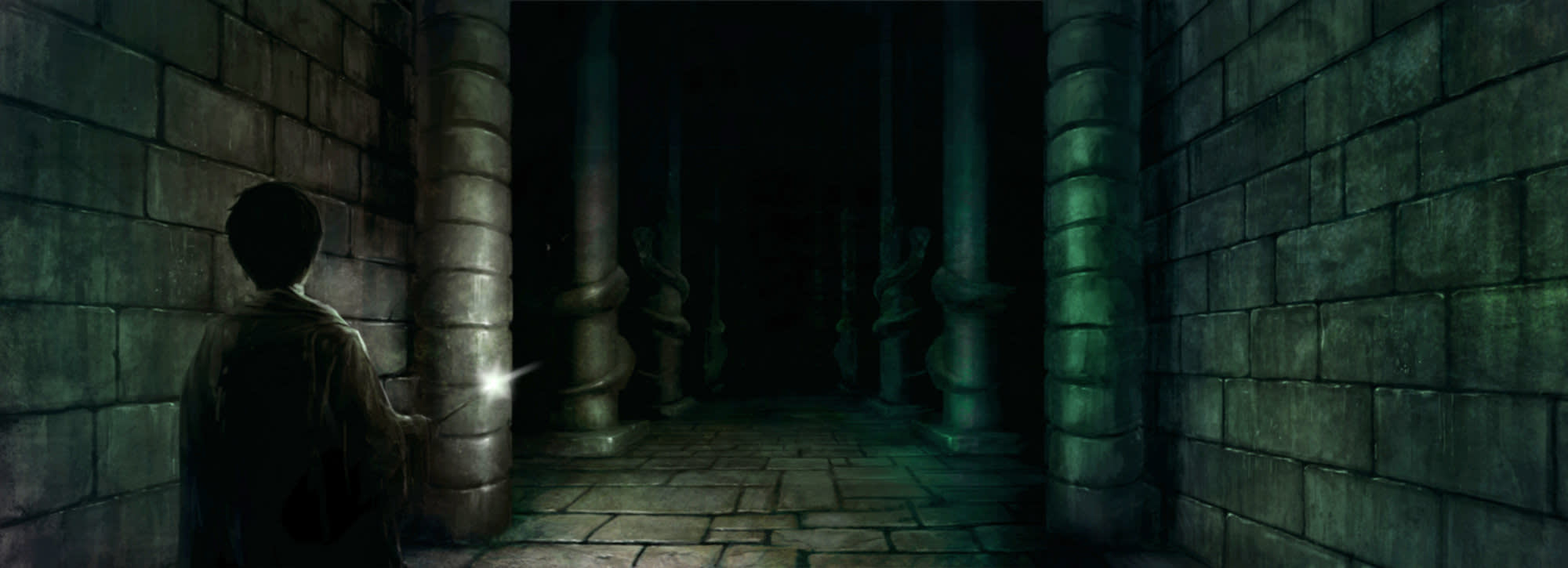There is no doubt that each of the four founders sought to stamp their own mark upon the school of witchcraft and wizardry that they intended would be the finest in the world. It was agreed that each would construct their own houses, for example, choosing the location of common rooms and dormitories. However, only Slytherin went further, and built what was in effect a personal, secret headquarters within the school, accessible only by himself or by those he allowed to enter.
Perhaps, when he first constructed the Chamber, Slytherin wanted no more than a place in which to instruct his students in spells of which the other three founders may have disapproved (disagreements sprung up early around the teaching of the Dark Arts). However, it is clear by the very decoration of the Chamber that by the time Slytherin finished it he had developed grandiose ideas of his own importance to the school. No other founder left behind them a gigantic statue of themselves or draped the school in emblems of their own personal powers (the snakes carved around the Chamber of Secrets being a reference to Slytherin’s powers as a Parselmouth).
What is certain is that by the time Slytherin was forced out of the school by the other three founders, he had decided that henceforth, the Chamber he had built would be the lair of a monster that he alone – or his descendants – would be able to control: a Basilisk. Moreover, only a Parselmouth would be able to enter the Chamber. This, he knew, would keep out all three founders and every other member of staff.
The existence of the Chamber was known to Slytherin’s descendants and those with whom they chose to share the information. Thus the rumour stayed alive through the centuries.
There is clear evidence that the Chamber was opened more than once between the death of Slytherin and the entrance of Tom Riddle in the twentieth century. When first created, the Chamber was accessed through a concealed trapdoor and a series of magical tunnels. However, when Hogwarts’ plumbing became more elaborate in the eighteenth century (this was a rare instance of wizards copying Muggles, because hitherto they simply relieved themselves wherever they stood, and vanished the evidence), the entrance to the Chamber was threatened, being located on the site of a proposed bathroom. The presence in school at the time of a student called Corvinus Gaunt – direct descendant of Slytherin, and antecedent of Tom Riddle – explains how the simple trapdoor was secretly protected, so that those who knew how could still access the entrance to the Chamber even after newfangled plumbing had been placed on top of it.
Whispers that a monster lived in the depths of the castle were also prevalent for centuries. Again, this is because those who could hear and speak to it were not always as discreet as they might have been: the Gaunt family could not resist boasting of their knowledge. As nobody else could hear the creature sliding beneath floorboards or, latterly, through the plumbing, they did not have many believers, and none, until Riddle dared unleash the monster on the castle.
Successive headmasters and mistresses, not to mention a number of historians, searched the castle thoroughly many times over the centuries, each time concluding that the Chamber was a myth. The reason for their failure was simple: none of them was a Parselmouth.



